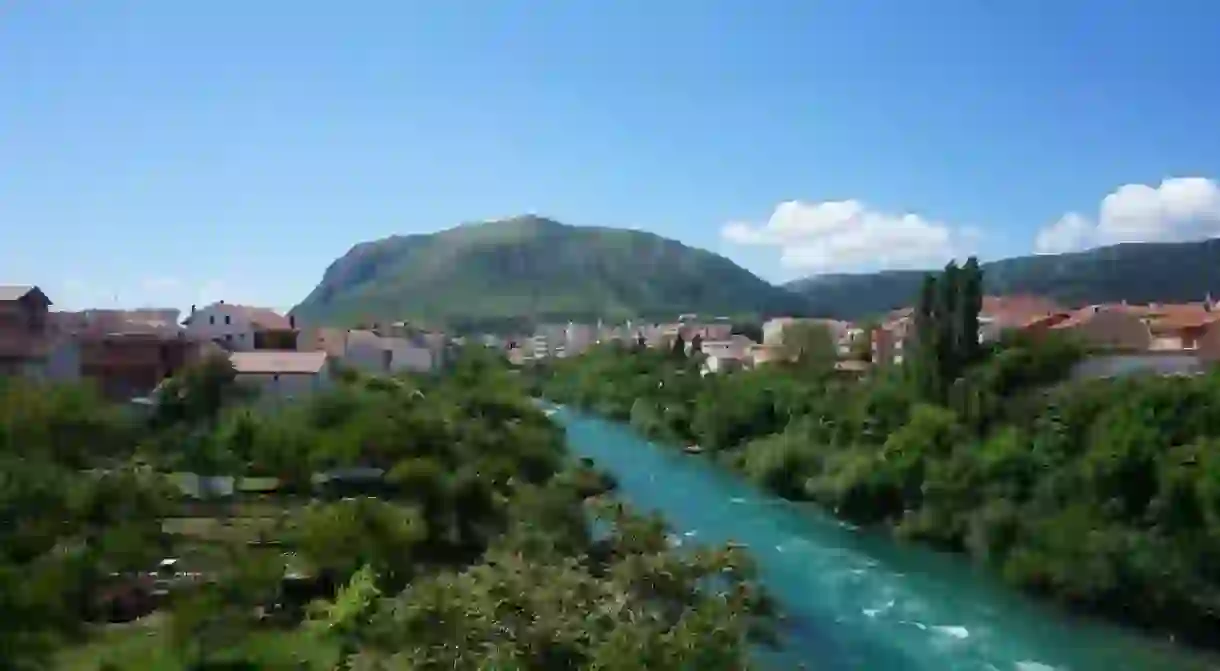The Most Beautiful Towns in Bosnia

Bosnia offers historical towns and cities with an Ottoman core combined with Austro-Hungarian and contemporary architecture. After the war, segregation along ethnic lines became a sad reality in many areas. This gives each town and city a different atmosphere, depending on the majority of either Bosniak, Serb or Croat. Here are some of the top towns and cities to visit in Bosnia.
As well as 11 stunning towns, we’ve also picked out a few experiences and tours to fully embrace everything Bosnia has to offer.
Sarajevo: Mostar, Konjic, Sufi House
Natural Feature
Visit Mostar’s famous Old Bridge and explore four other picturesque locations in Herzegovina. This tour offers a mix of cultural insights and natural beauty.
Tuzla
Historical Landmark
Sarajevo
Architectural Landmark

Discover Herzegovina Day Tour from Mostar
Natural Feature
This day tour covers Herzegovina’s highlights, including Blagaj, Pocitelj, Kravice Waterfalls, and the city of Mostar, providing a thorough exploration of the region.
Visoko
Natural Feature
Few outside of Bosnia know about this small town to the northeast of Sarajevo. Visoko’s claim to fame is the Bosnian Pyramids, which may either be the tallest and oldest in the world — or a cruel hoax depending on who you ask. Tourists often take a day trip, but neglect everything else in the former capital of the Bosnian Kingdom. An Ottoman centre with mosques and narrow streets give the town beauty.
Brcko
Natural Feature
Brcko District is somewhat unique with the title of Europe’s only self-governing free city. Sitting on the banks of the River Sava with Croatia to the north, Brcko hasn’t become a victim of segregation. Bosniaks, Serbs and Croats live side by side in this little-explored destination. Walking along Trg Mladih, the main street is lined with colourful Hapsburg architecture and cafes; you’ll get a feeling for Brcko’s soul. Other highlights include the orange and yellow Gradska Vijecnic, which is a government building on Bulevar Mira 1.
Jajce, Travnik and Pliva watermill
Natural Feature
Explore the historic towns of Jajce and Travnik and visit the scenic Pliva Watermills on this full-day tour, offering a blend of history and natural beauty.
Banja Luka
Natural Feature
Konjic
Natural Feature

Imagine a small town along a river surrounded by canyons and mountains, and you have Konjic. Located about halfway between Sarajevo and Mostar and against the backdrop of the Prenj Mountain, this is one of Bosnia’s most beautiful towns. Sultan Mehmed IV’s Stara Cuprija, a six-arched stone bridge over the Neretva River, dominates the centre. The bridge dates to 1683 and is the last grand Ottoman structure in Bosnia, which is also said to be the point where the region of Bosnia meets Herzegovina. Tito’s Nuclear Bunker is a short distance from Konjic, and the canyons attract white-water rafters.
Pocitelj
Natural Feature
Few visit Pocitelj, a town of less than 1,000 residents, near Mostar. The medieval town was once of strategic importance before and during the Ottoman era, which the UNESCO Fort of Pocitelj, or Kula, protected. Visitors walk along the maze of cobblestone streets through the old buildings, visit the fort and enjoy the 16th-century Hajji Alija’s Mosque.
Sarajevo: Mostar, Konjic, Dervish House, Pocitelj & Kravica Falls
Natural Feature
Discover Mostar, Blagaj, Pocitelj, and Kravice Waterfalls on this tour. It highlights the cultural and natural treasures of Herzegovina.
Neum
Natural Feature
Did you know Bosnia has an Adriatic coastline? Looking at the map, you would need to zoom in to see their 10 kilometres (6.2 miles) sandwiched between the border with Croatia to both the north and south. Bosnia has the second smallest coastline, second only to Monaco, and the main city is Neum. Neum is small with a beautiful stretch of the Adriatic and feels like you’ve stepped back into Yugoslavia. The town may not have architectural beauty, but it makes up for it with its coastline.
Mostar
Natural Feature
The most visited destination in Bosnia attracts tourists to Stari Most. Combine this with a special mixture of Bosniak and Croat cultures on either side of the river, and visitors get two very different experiences. Kujundziluk is Mostar’s Ottoman Bazaar, full of stalls and branching alleys. The Croat side houses Cathedral of Mary, Mother of the Church, and shaded avenues with a Croatian charm.
Visegrad
Natural Feature
Travnik
Natural Feature
Ottoman Governors (Viziers) once used Travnik as their seat of power, giving it the nickname ‘the European Istanbul’. The small town with a population of fewer than 20,000 residents is 90 kilometres (56 miles) northwest of Sarajevo in Central Bosnian and Herzegovina. Travnik’s Old Town dates to the 15th century and boasts 28 protected historical and cultural buildings. Walking through the streets gives a sense of being in an open-air museum. One of the highlights is the two 18th-century Ottoman clock towers and Travnik Fortress.













